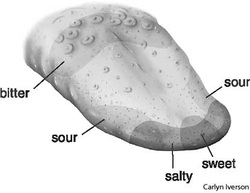
In the following article, Julian Omidi discusses the decision by many school districts to abandon the federal healthy lunch programs due to low student participation and lack of revenue.
After all of the initiatives by local, state, and federal governments to curb obesity in our children; after all of the alarming statistics from years past indicating that the coming generation could have a shorter lifespan than the generation before it; after all of the encouraging data from diverse cities and school districts indicating that public school health programs were actually curbing the childhood obesity rate – school districts around the United States are actually abandoning the healthy lunch program that has been so touted by nutritionists, doctors and public health officials.
The healthy lunch program isn’t without its flaws; the menus often don’t reflect what the kids were actually receiving; kids are squeamish about trying new types of food; some of the lunches don’t have enough calories to sustain the truly active, athletic students. However, the fact that a federal school lunch program exists and will continue to exist should spur us, as taxpayers, to try to modify the output in healthy and sensible ways so that we can at least be sure that our tax dollars aren’t actually contributing to health issues in our kids. The healthy lunch program is definitely worth trying honestly and vigilantly – otherwise, what is the point of having a lunch program at all?
The failure of the healthy lunch programs has many sources. One reason that the healthy lunches are being rejected by the kids is that they are wholly reluctant to eat healthy foods because their palates have been programmed by processed, sugary, fatty junk. They don’t seek remediation of hunger when they eat; they want pleasure and comfort. The fact that they are so glutted with junk food has made their brain chemistry react poorly to whole foods.
Another reason for the failure of the program is the slack application of program standards. A young boy in New York actually filmed a documentary about the healthy lunch program at his public school and how it has consistently failed to live up to the established standards. The menu would list certain menu items, while the cafeteria would distribute completely different things.
Some of the items simply weren’t robust enough for healthy, active growing children. While sedentary children need fewer calories than active ones, athletic children – children who are a part of sports teams and train rigorously – need quite a few calories to maintain their energy and grow healthy muscle mass. While the low calorie options were likely appropriate for kids who don’t get much exercise at all, there needs to be supplementary items for kids who burn a lot of calories.
Unfortunately, there is always a period of adjustment for any new program, governmental or otherwise. We cannot let our hysteria overwhelm our common sense when it comes to feeding our children well. Just because the school lunch offerings of fish sticks, chicken nuggets, cheeseburgers and pizza were contributing to the national health crisis doesn’t mean we have to abandon everything that the kids found familiar; we don’t have to frantically switch to quinoa and baked sweet potato croquettes. More vegetables, lean protein and whole grains – less fat, sugar and salt. What’s difficult about that?
After all of the initiatives by local, state, and federal governments to curb obesity in our children; after all of the alarming statistics from years past indicating that the coming generation could have a shorter lifespan than the generation before it; after all of the encouraging data from diverse cities and school districts indicating that public school health programs were actually curbing the childhood obesity rate – school districts around the United States are actually abandoning the healthy lunch program that has been so touted by nutritionists, doctors and public health officials.
The healthy lunch program isn’t without its flaws; the menus often don’t reflect what the kids were actually receiving; kids are squeamish about trying new types of food; some of the lunches don’t have enough calories to sustain the truly active, athletic students. However, the fact that a federal school lunch program exists and will continue to exist should spur us, as taxpayers, to try to modify the output in healthy and sensible ways so that we can at least be sure that our tax dollars aren’t actually contributing to health issues in our kids. The healthy lunch program is definitely worth trying honestly and vigilantly – otherwise, what is the point of having a lunch program at all?
The failure of the healthy lunch programs has many sources. One reason that the healthy lunches are being rejected by the kids is that they are wholly reluctant to eat healthy foods because their palates have been programmed by processed, sugary, fatty junk. They don’t seek remediation of hunger when they eat; they want pleasure and comfort. The fact that they are so glutted with junk food has made their brain chemistry react poorly to whole foods.
Another reason for the failure of the program is the slack application of program standards. A young boy in New York actually filmed a documentary about the healthy lunch program at his public school and how it has consistently failed to live up to the established standards. The menu would list certain menu items, while the cafeteria would distribute completely different things.
Some of the items simply weren’t robust enough for healthy, active growing children. While sedentary children need fewer calories than active ones, athletic children – children who are a part of sports teams and train rigorously – need quite a few calories to maintain their energy and grow healthy muscle mass. While the low calorie options were likely appropriate for kids who don’t get much exercise at all, there needs to be supplementary items for kids who burn a lot of calories.
Unfortunately, there is always a period of adjustment for any new program, governmental or otherwise. We cannot let our hysteria overwhelm our common sense when it comes to feeding our children well. Just because the school lunch offerings of fish sticks, chicken nuggets, cheeseburgers and pizza were contributing to the national health crisis doesn’t mean we have to abandon everything that the kids found familiar; we don’t have to frantically switch to quinoa and baked sweet potato croquettes. More vegetables, lean protein and whole grains – less fat, sugar and salt. What’s difficult about that?


 RSS Feed
RSS Feed